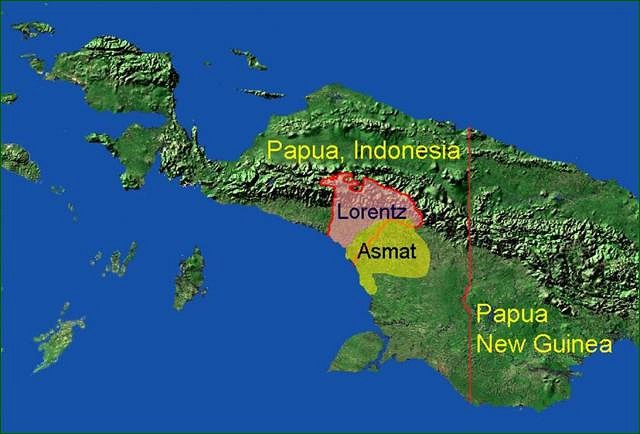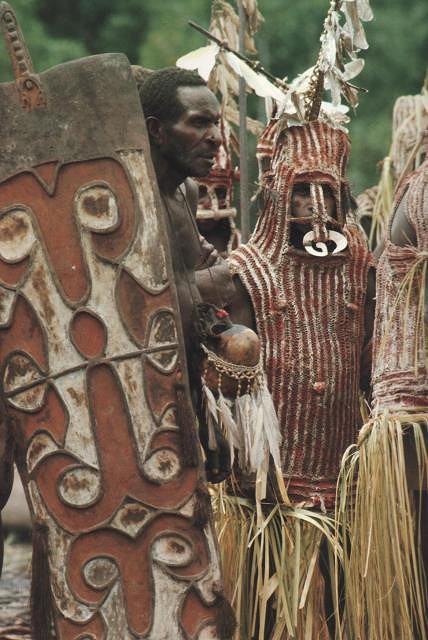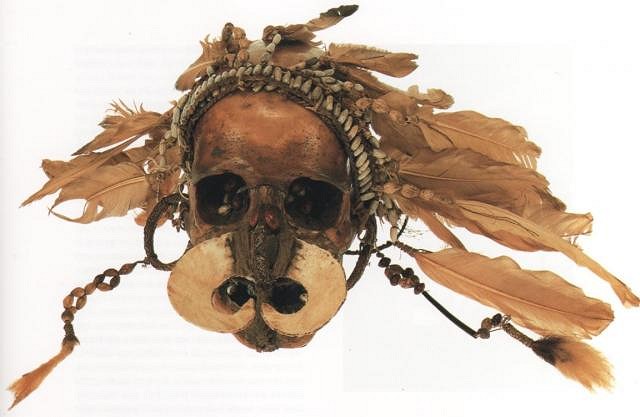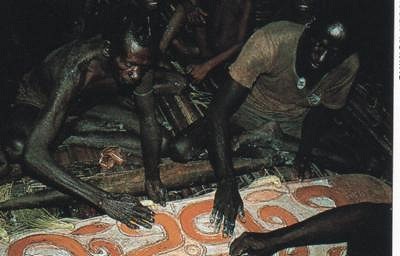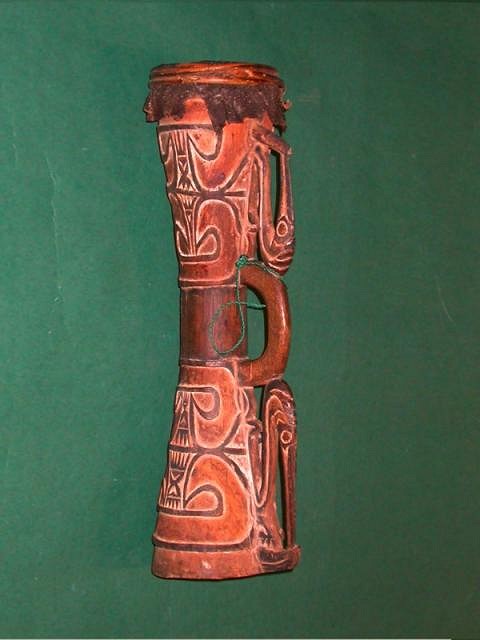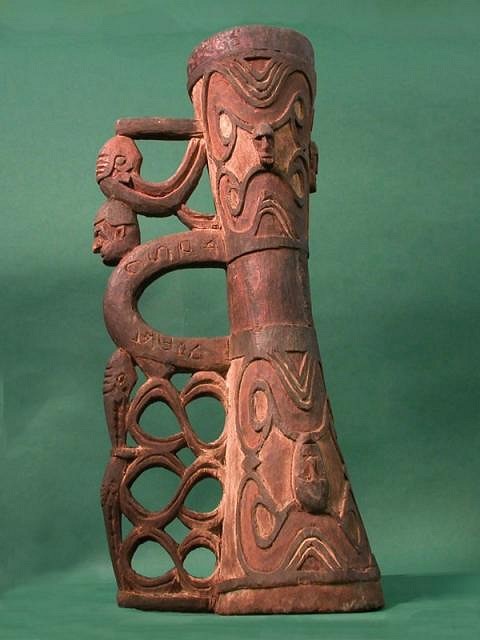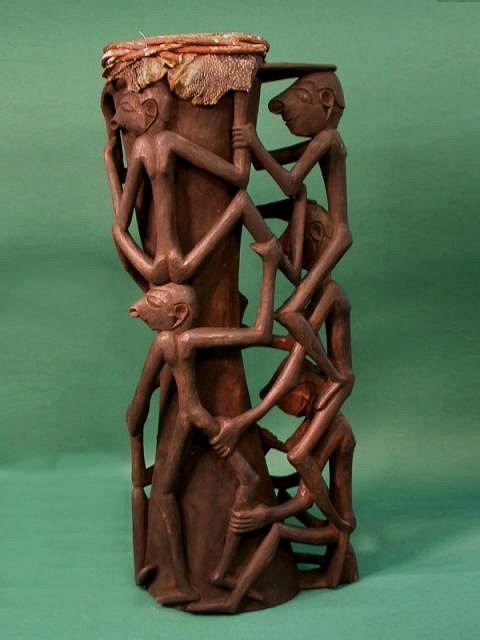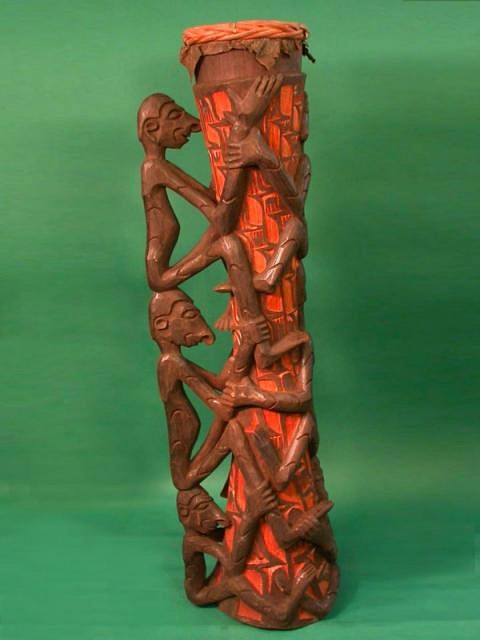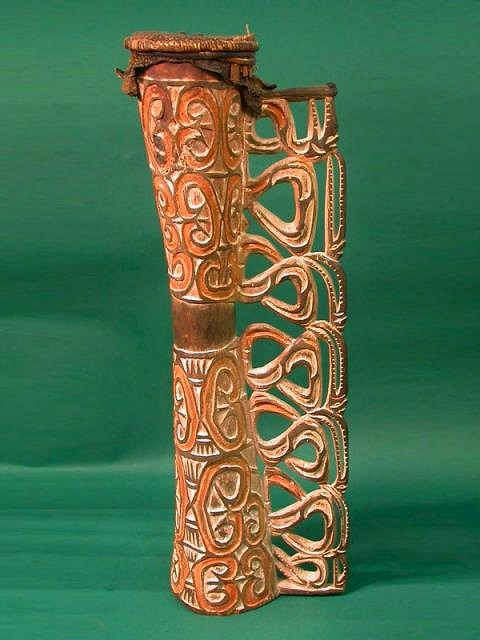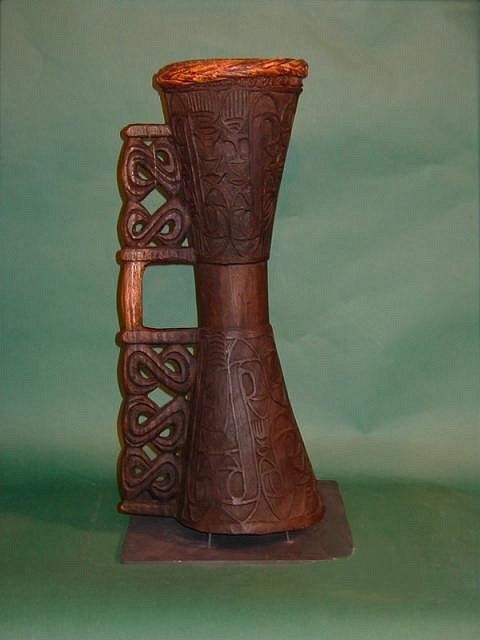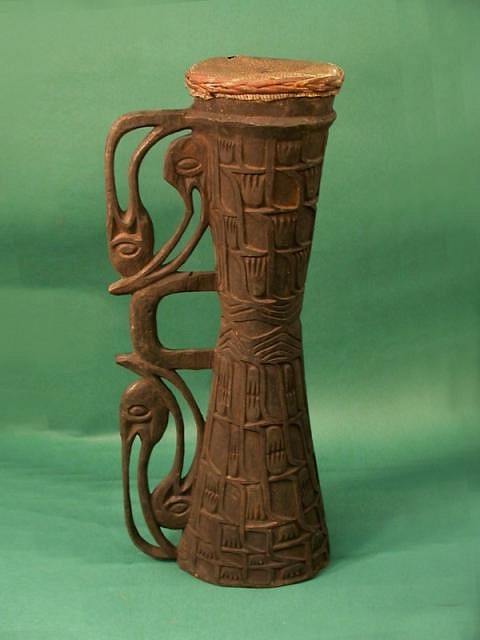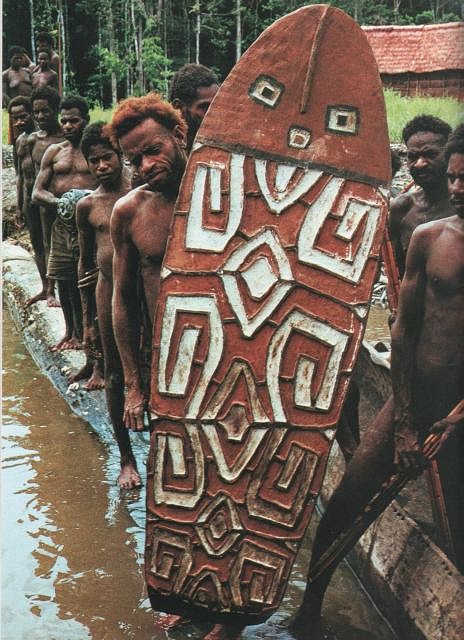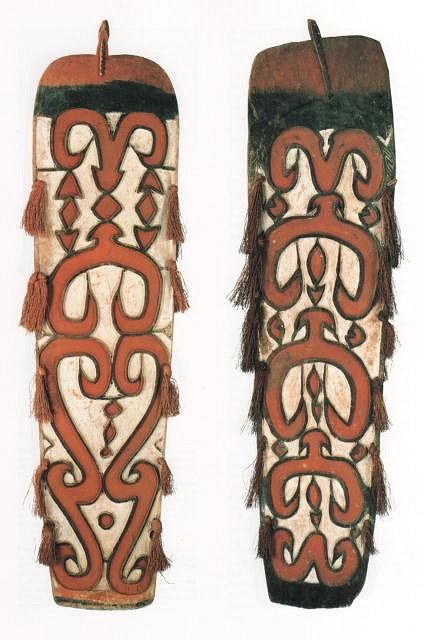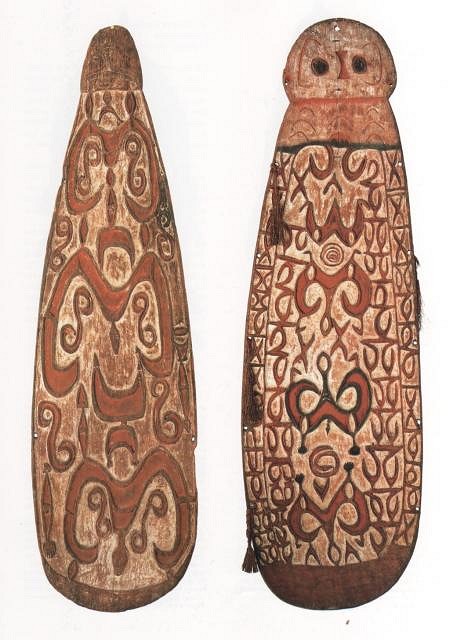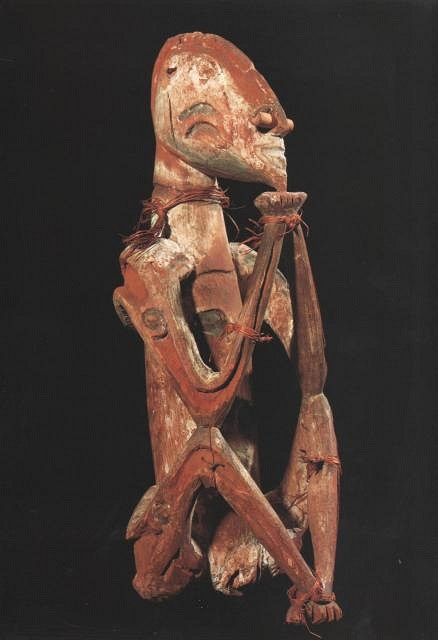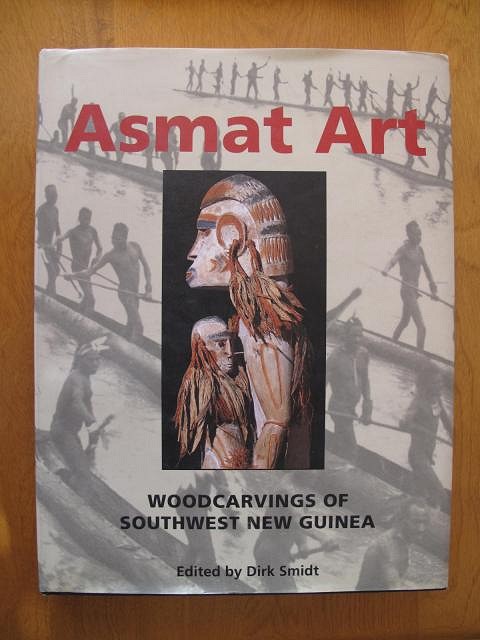Tiki Central / General Tiki / The Asmat People of New Guinea
Post #510840 by Babalu on Fri, Feb 12, 2010 2:36 PM
|
B

Babalu
Posted
posted
on
Fri, Feb 12, 2010 2:36 PM
The Asmat People of New Guinea Ok, I was going to post the below information on my thread in "Other Crafts", but I began to think that perhaps "General" is where it might be best suited. Over the past year, my artistic pursuits have lead me down a path of research of the artwork of New Guinea (NG) as a whole. When I first pointed my arrow in the direction of NG, it was simply because I was intrigued with the wonderful use of line, combined with animal imagery found in the artworks there. What I discovered, however, was that what I became "more" interested in was the people themselves, the symbolism's, and the mystical qualities attributed to the design in, and surrounding their art work. The drums of NG are of special interest to me not just for the their spiritualism, but also because of the natural transition these objects have to drinking vessels (mugs) that I might reconstruct in clay. I have tried not to narrowed my sights to just this one focus. In all this looking around NG, perhaps one of the most intriguing subjects to surface for me was the Asmat peoples. The area of NG in which the Asmat live was one of the last places on this planet to be discovered in any depth. In fact, It looks to me "right now anyway", that the art of the Asmat was largely overlooked by the MidCentury artists and crafts people that were playing with images from the South Pacific region; not because it lacked the content to be integrated into the western based art movements springing up at the time, but more over, because of the very limited collections of objects and historical reference to the area that had been gathered back then. Still, a few major artists such as Henry Matisse, and a few others, were known for having owned, and referenced in their own art, some art of the Asmat. Big pole carvings from the Asmat, drums, and shields really didn't start coming out of the area in any "real" numbers until the mid 1960's. There was a noted mapping expedition of the area that took place in the late 1800's, and small amount of art brought out...mid 50's even more...but it wasn't til the late 50's early 60's did museum curators, and collectors really start to pouring into the area and pulling artwork out. The earlier collections seemed for a long time to be stored away in Dutch museums....out of sight, out of mind. Location: The Asmat region is located in the deep forbidding jungles in the southwest area of New Guinea...considered Melanesia. This area was not to long ago considered the eastern most area of the Dutch East Indies, but is now considered a part of Indonesia. New Guinea is divided more or less by a steep mountain range...it even snows up on the peaks. The Pacific side of NG is called Papua New Guinea (PNG) of the The southwest area of NG is very wet and flat and again, very heavily jungled. Located next to the shallow Arafura Sea, the countless muddy streams that lead inland to the Asmat can only be traveled at high tide. Finding a rock in the area is like finding a needle in a hay stack. During the beginning stages of WW11, our troops landed not too far from this area in NG...as the crow flies not to far that is...that's a whole other topic for a different thread really...
The People: Death is very important to the Asmat..."without death, their can be no life" for the Asmat. Head hunting was (and perhaps still is in some remote areas) a way of life for the Asmat. Head hunting was only really recently (1960's) abolished by law. A young boy could not become a man until he had taken the head of an enemy. There were no natural causes for death in the Asmat belief structure, unless it was a very young, or very old person. For the Asmat, if someone died for whatever reason, someone else had wished it so...and that death needed to be avenged before the soul (or spirit) of that dead person could move across the sea to heaven.
Art in General: The south west of New Guinea can't be very friendly to carvings being so wet...this is most likely one reason why you don't find any really old art around. The art of the Asmat was not built for museums, it deteriorates over time. The pigments used on all carvings are limited to only 3 colors...red (iron ore rich mud from the region), white (lime made from ground clam shells mixed with water), and black (charcoal). Even today, with other pigment choices available, the Asmat rarely venture from this pallet.
Drums: It is said by the Asmat, that the creator (named Fumeripits) built the first Jeu, or drum. His beating on this Jeu animated, or brought to life the carvings to which he had done from trees...the first man. The Asmat feel that their Wowipit's (carvers) works are a link, or a bridge between the material and spiritual worlds. Most all of the carved images on these drums, and almost everything else carved for that matter, are symolic of headhunting. Below are some wonderful examples of some more recent drum carvings (mid 70's to 90's). Ok, you carvers are going to love this...the below Youtube links are done of an Asmat Wowipit making a drum...I think this is just priceless footage. There are 2 parts to this video - each 10 mins in lenght...grab a cup of coffee, and post up...you will enjoy it. Be sure to follow other Youtube links on the Asmat as well... Caving video 1: Carving video 2:
Sheilds: A carved shield is very special to the Asmat as it holds the spirit of a dead ansester. An Asmat shield it called by the name of that dead ansester that it reflects...when a worrior goes in to battle with his shield, he has his family kicking ass by his side. It has even been noted where ememy have actually surrendered to the Asmat (knowing of the certen death) at just the sight of a powerful shield.
Well, there is so much more that I could talk about...the carved poles, figuretive carving, ceramonial dress, etc...instead, let me provide you with a few resourses to have some fun on your own if you choose too...
This is a wonderful book (many of the above pictures were pulled from it): "Asmat Art" by Dirk Smidt....a very detailed, colorful book...one you should have in your collection -
The Lowell D. Holmes Museum of Anthropology - Witchita State another... The American Museum of Asmat - St Thomas There are many other Sites too...just follow links on these links... Ok, there's some information on the Asmat peoples and their art...I'm wondering if anyone out there might have come across any of this type of Asmat imagery used in the more kitcher arena of Polenisia Pop and the Golden Age of Tiki here in America?...I'm guessing (for reasons listed above) that there just isn't a whole lot? Thanks for looking - [ Edited by: Babalu 2010-02-12 15:35 ] |

